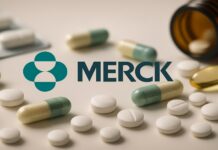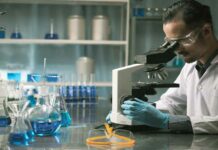The US crackdown on healthcare fraud is paying huge dividends to the exchequer, accounting for three quarters of the money recovered as penalties in fraud cases exposed by whistleblowers between 1987 and 2013-over $21 billion of the total $27 billion. Over half the whistleblower cases registered under the False Claims Act since 1987 were related to healthcare and pharmaceutical products, followed by cases related to the department of defence, which accounted for 16% of cases and led to the recovery of just $2.7 billion.
This emerges from the statistics on cases under the Act from 1987 until the end of 2013 put together by the US Department of Justice. The cut-off was 1987 because the legislation in its current form came into being through amendments to the Act in 1986.
False claims cases involving healthcare and pharmaceuticals resulted in the largest recoveries in 2013, about $2.6 billion. Of this, the bulk was paid by Johnson & Johnson, about $2.2 billion, to resolve a whistleblower case alleging kickbacks and promotion of drugs for unapproved uses, which included the anti-psychotic drugs, Risperdal and Invega, as well as Natrecor, a drug used in certain heart diseases.
The total number of fraud cases under the Act is divided into ‘qui tam’ cases and ‘non-qui tam’ cases. Qui tam cases are ones in which a whistleblower or a private individual who assists a prosecution can receive all or part of any penalty imposed. About 70% of recoveries in fraud cases came from whistleblower cases or qui tam cases– $27 billion out of almost $39 billion recovered till 2013. Qui tam cases jumped from just 30 cases filed in 1987 to 635 cases in 2011, 652 in 2011 and 753 in 2013.
Though the government intervened or pursued only about 25% of such cases, they accounted for over 96% of the money recovered, showing how much the chances of success of a case improved with government intervention. This trend held good for cases related to healthcare fraud, defence related frauds as well as other kinds of fraud.
Till 2000, non-qui tam cases brought in recoveries totalling over $3.6 billion while qui tam cases raked in over $4 billion in penalties. Since 2001, that mix has changed dramatically. While non-qui tam cases brought in just over $8 billion, qui tam or whistleblower cases brought in a whopping $23 billion. In the 1987-2013 period, whistleblowers got $4 billion or 15% of the total recoveries in qui tam cases.
Statistics show that whistleblower cases are mostly related to healthcare fraud. In the case of non-qui tam cases, though healthcare fraud cases comprised just 17% of the total, they accounted for 49% of recoveries. In the case of recoveries from qui tam cases, healthcare fraud related recoveries amount to 77% of the total, almost $21 billion out of a total of over $27 billion.
Pharmacetical companies have shelled out the bulk of the healthcare fraud recoveries. The steadily increasing healthcare fraud cases each year, especially those involving the drug industry, fly in the face of the industry’s claim that their misdemeanours are a thing of the past and that they are committed to ethical business. Quite obviously, the government’s initiative in the mid-80s that established significant whistleblower rewards under the FCA – , 15-30% of the recovered amount – is paying off.




















